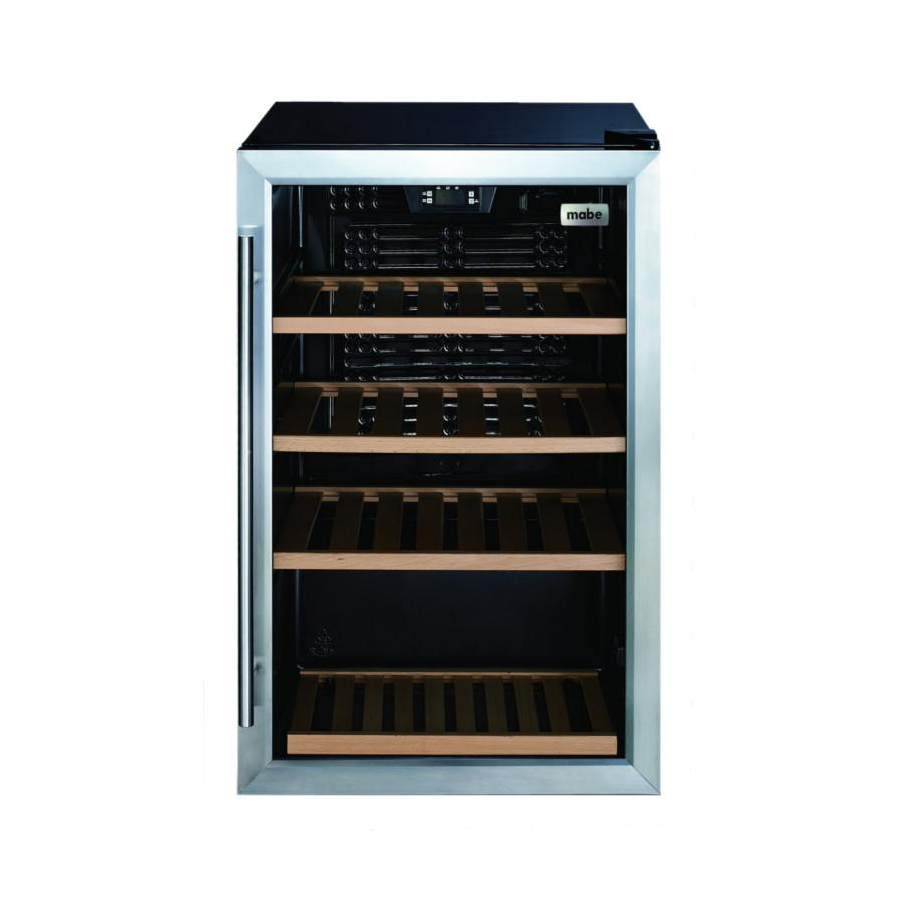
Summary of Contents for GE GWV045FARRBS
- Page 1 Use and Care Manual GE Wine Cooler GWV045FARRBS Pub. No. APWC1000E 4/12/04, 9:40 AM GE68_GWV045FARRBS...
-
Page 2: Table Of Contents
• Read and follow all safety rules and operating instructions before first use of this product. • This appliance is intended for storing bottled wine in the temperature range of 7°C to 15.0°C / 44.6°F to 59.0°F. • Please save these manual. GE Appliances MODEL: GWV045FARRBS 4/12/04, 9:40 AM... -
Page 3: Before Using
Before Using BEFORE USING • Before connecting the appliance to electrical power supply, leave it to run for about 2 hours, which will reduce the possibility of malfunctions in the cooling system due to transport handling. • Clean the appliance thoroughly, especially in the interior (See Maintenance and Cleaning). •... -
Page 4: Important
Before Using IMPORTANT • If you bought this appliance to replace an old one equipped with a door lock that cannot be opened from the inside (lock, bolt), make sure that the lock is removed, disabled or destroyed before discarding. This will make it impossible for children to accidentally lock themselves inside the appliance and suffocate. -
Page 5: Placing And Installation
Placing and Installation CHOOSING THE RIGHT PLACE Place the appliance in a dry and regularly ventilated room. Never place the appliance near heat emitting devices (e.g. cooking appliances, radiators, water heaters or similar devices) and do not expose to direct sunlight. The appliance should be positioned at least 2 inches away from electric or gas cooking appliances and at least 12 inches away from oil or coal fired stoves. -
Page 6: Reversing Door Opening Direction
Placing and Installation REVERSING DOOR OPENING DIRECTION CAUTION: To avoid personal injury, we recommend reversing the door by qualified technicians. (The unit is delivered with the door on the right side. The following is an example describing steps to change the door to the left side. To change the door back to the right side, do the similar steps but on opposite side.) 1. -
Page 7: Description Of The Appliance
Description of the Appliance DESCRIPTION OF THE APPLIANCE (A) Adjustable Wire Shelves (The number of shelves depends on the model) Shelves can be optionally placed on the guides inside the appliance. Perishable items should be stored towards the back/rear of the shelves. i.e. -
Page 8: Temperature Control
Temperature Control TEMPERATURE SETTING AND DISPLAY 1. Normal Display: • The cabinet temperature (in Celsius or Fahrenheit, F=32+9/5°C) is displayed in normal condition. • The indicator flashes during the delay period before starting of the compressor. • The indicator lights in the refrigerating cycle. •... -
Page 9: Interior Parts
Temperature Control INTERIOR PARTS 1. TEMPERATURE CONTROL: For controlling the temperature inside the wine cooler. Turns the motor on as soon as the temperature rises above the desired level. 2. CHROME PLATED SHELVES: Odor resistant, rustproof, and removable for easy cleaning. 3. -
Page 10: Maintenance And Cleaning
Maintenance and Cleaning AUTOMATIC DEFROSTING OF THE APPLIANCE • There is no need to defrost the cooler , because ice depositing on the inner back wall is defrosted automatically. • Ice build-up on the inner back wall during the compressor operation will defrost automatically (when the compressor has cycled off). -
Page 11: Trouble-Shooting Guide
Trouble-Shooting Guide Sometimes you may come across minor problems that in most cases do not require a service call and can be easily eliminated. The problem may have resulted from improper handling and / or installation of the appliance. Please refer to the below trouble-shooting guide to assist you in identifying the possible cause and solution to your problem. - Page 12 Trouble-Shooting Guide Noise Cooling in this appliance is made possible by a compressor, which will produce certain noise levels. • During the operation of the compressor the noise of the liquid can be heard and when the compressor is not operating, the refrigerant flow can be heard. This is a normal condition and it has no influence whatsoever on the lifetime of the appliance.









